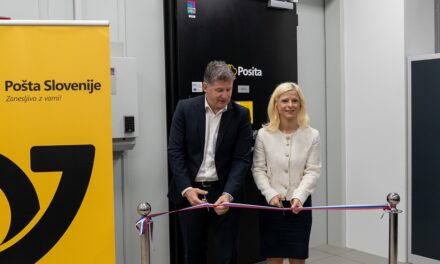
"Why Are Traditional Postal Services 'In' Again?"
“Why Are Traditional Postal Services ‘In’ Again?”
Marjan Osvald,
Head of International Postal Affairs and Operations Logistics,
Pošta Slovenije,
PostEurop Plenary Assembly,
Basle,
Switzerland.
Ladies and Gentlemen,
My thanks to PostEurop and Marc for their kind invitation. It is a great pleasure for me to be here at – what I believe to be – the most pleasant of all postal industry gatherings.
Based on my eight years of experience working in the postal industry since Post and Telecom separated in Slovenia in 1995, in the next three minutes, I will try to answer the question, why are traditional postal services “in” again? – and present my view on the common future of postal operators.
By looking at the graph you can see the [Posta Slovenije] volumes and revenues for each of the four basic service segments (letter mail, parcels, financial services and sales).
The first conclusion one can draw from these two graphs is – they are both boring – regardless of all the changes that have taken place in recent years. In fact, nothing revolutionary has happened and I am convinced that no such thing will happen in the near future.
Traditional postal services grow steadily and with the services also grows the competition. The revenue shares per individual segment indicate – and now comes the bad news – that, in the future, we will have to work more, for less!
Here is a typical example. In 1995, in Slovenia, there were
20 payment instruments (in-payment forms), thereof as
many as 19 were only used at postal counters. Since 2002,
we have only one payment instrument, but we render a number of other services such as banking services – we accept orders for the sale of shares, bonds, we offer savings in investment funds, etc., however, the revenue share is approximately the same as that in 1995 – not to mention the huge investments made since then.
A similar comparison can be made for the letter mail revenue share. The Direct marketing share in 1995 was only 3%. In 2002, DM accounted for 36% of letter mail. In short, what we are dealing with here is the restructuring within individual segments, but you have to be READY for it.
I strongly believe that our future is in the provision of services for which we are qualified – and that is also the answer to my question in the beginning, which was, why are traditional postal services “in” again?
The services, for which we are not qualified should be defined and we should let the others – whether they are the so-called super posts or private postal operators – provide them. We can then decide whether or not we will cooperate with them.
A famous American, whose name – since I am pacifist – I shall not mention here even though he was a Nobel Prize winner, once asked, “When I want to speak to Europe, who do I telephone?” Allow me the liberty of modifying that question slightly to ask you, “When you want to send a letter, where will you post it?”
Thank you.












